Intel Xeon E5-2600 v4 Broadwell-EP Review
Why you can trust Tom's Hardware
Intel Test Platforms And How We Test
How We Test
We tested the Broadwell-EP-based Xeon E5-2697 v4 on both an Intel Software Development Platform server and the production-ready Supermicro SYS-1028U-TN10RT+. We tested the Haswell-EP-based Xeon E5-2699 v3 and E5-2643 v3 on the Intel Software Development Platform. And we tested the Ivy Bridge-based (v2) CPUs in Intel's Server System R2208GZ4GC.
| Header Cell - Column 0 | Cores | Threads | Frequency | Max Turbo Boost | Cache | TDP | Max. Memory Speed | Socket |
|---|---|---|---|---|---|---|---|---|
| E5-2697 v4 | 18 | 36 | 2.3GHz | 3.6GHz | 45MB | 145W | DDR4-2400 | FCLGA2011-3 |
| E5-2699 v3 | 18 | 36 | 2.3GHz | 3.6GHz | 45MB | 145W | DDR4-2133 | FCLGA2011-3 |
| E5-2643 v3 | 6 | 12 | 3.4GHz | 3.7GHz | 20MB | 135W | DDR4-2133 | FCLGA2011-3 |
| E5-2690 v2 | 10 | 20 | 3.0GHz | 3.6GHz | 25MB | 130W | DDR3-1866 | FCLGA2011 |
| E5-2680 v2 | 10 | 20 | 2.8GHz | 3.6GHz | 25MB | 115W | DDR3-1866 | FCLGA2011 |
| E5-2670 v2 | 10 | 20 | 2.5GHz | 3.3GHz | 25MB | 115W | DDR3-1866 | FCLGA2011 |
We benchmark with the open source Linux-Bench script, which is available on Linux-Bench.com and GitHub. ServeTheHome and others in the open source community maintain it. The suite runs from an Ubuntu 14.04 LiveCD either on local storage or through a KVM-over-IP connection. The script installs dependencies and runs several well-known independent open source benchmarks that characterize CPU performance.
Intel "Wildcat Pass" S2G3SY1Q Server
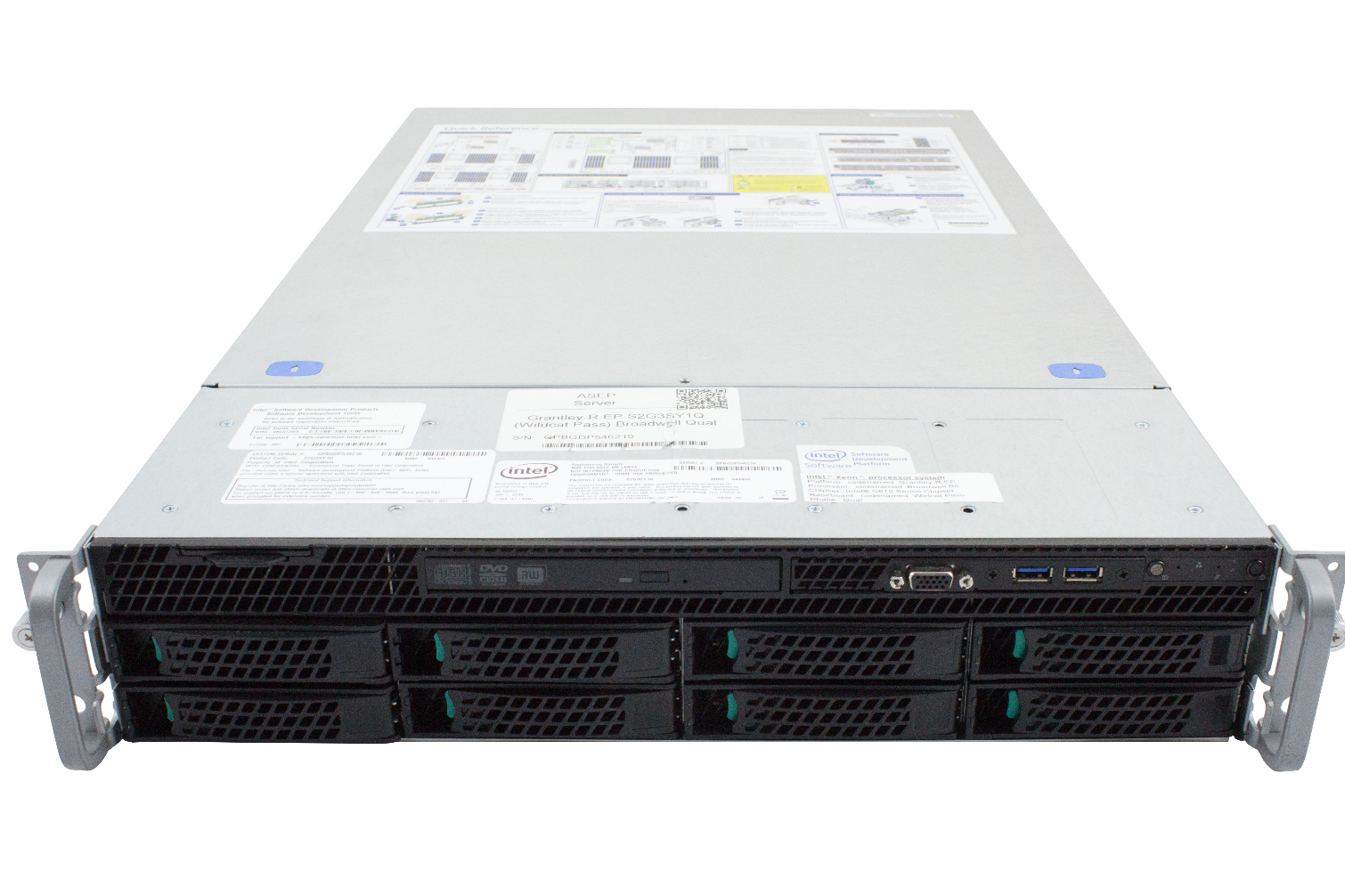
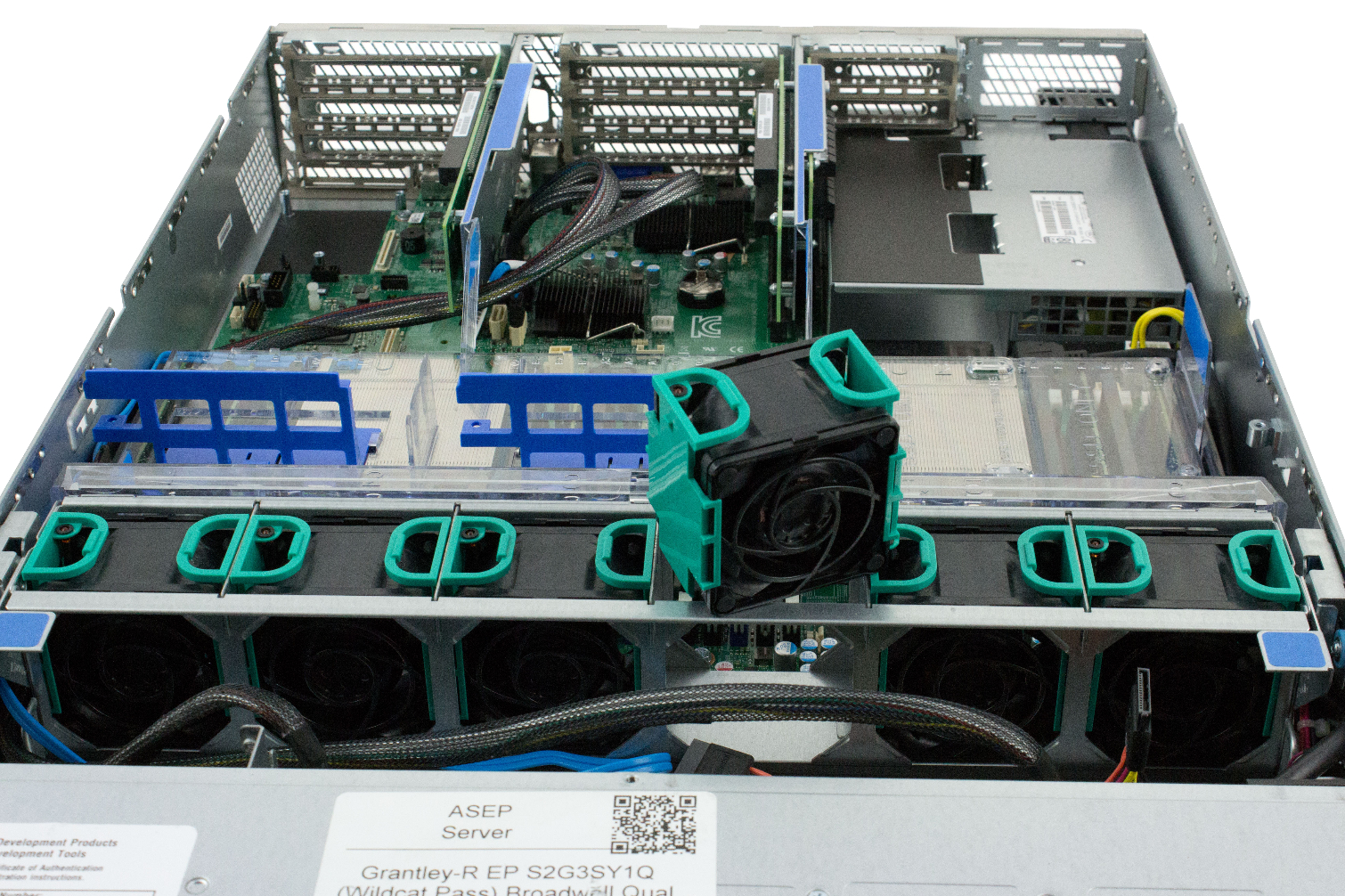
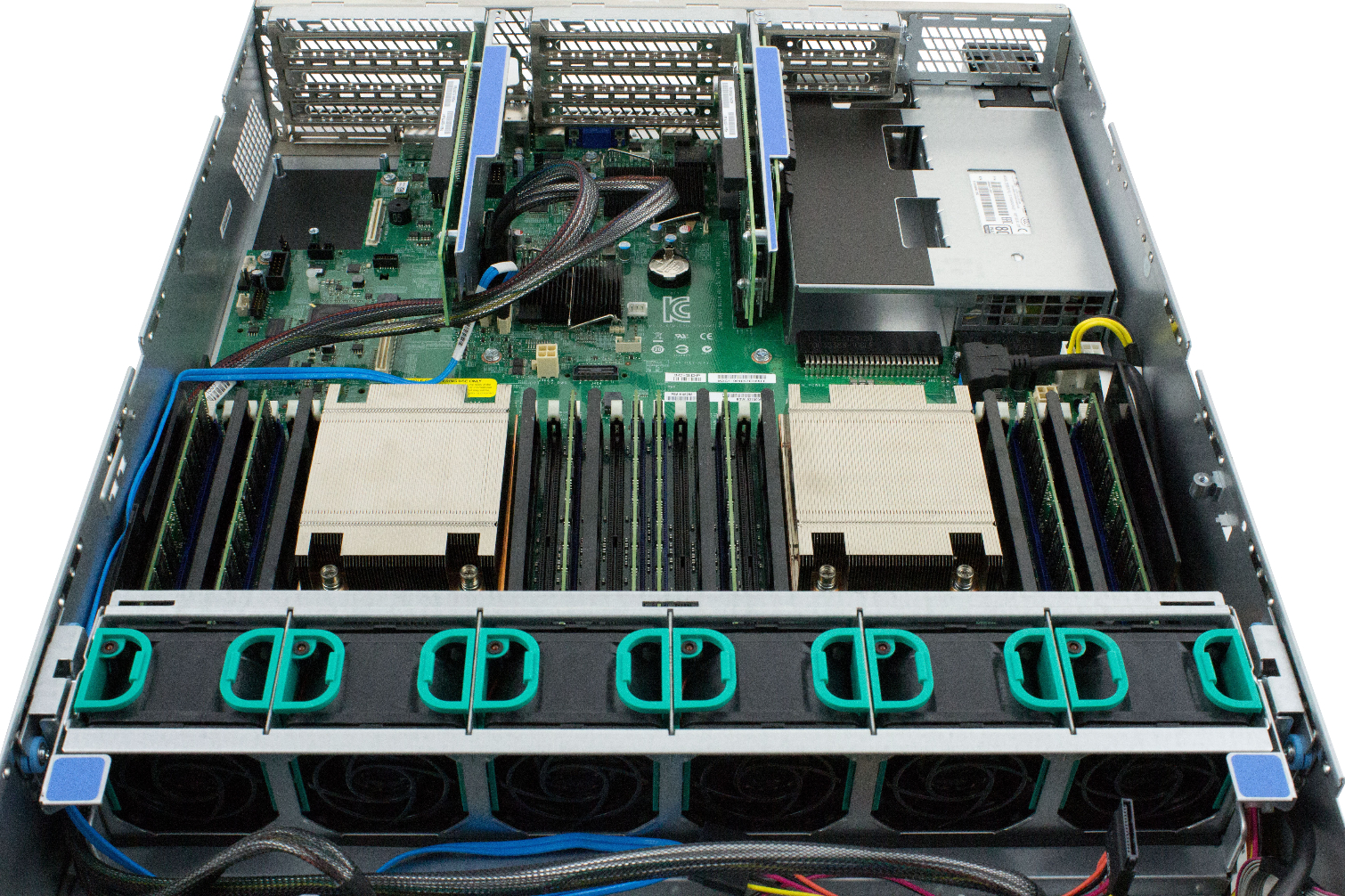

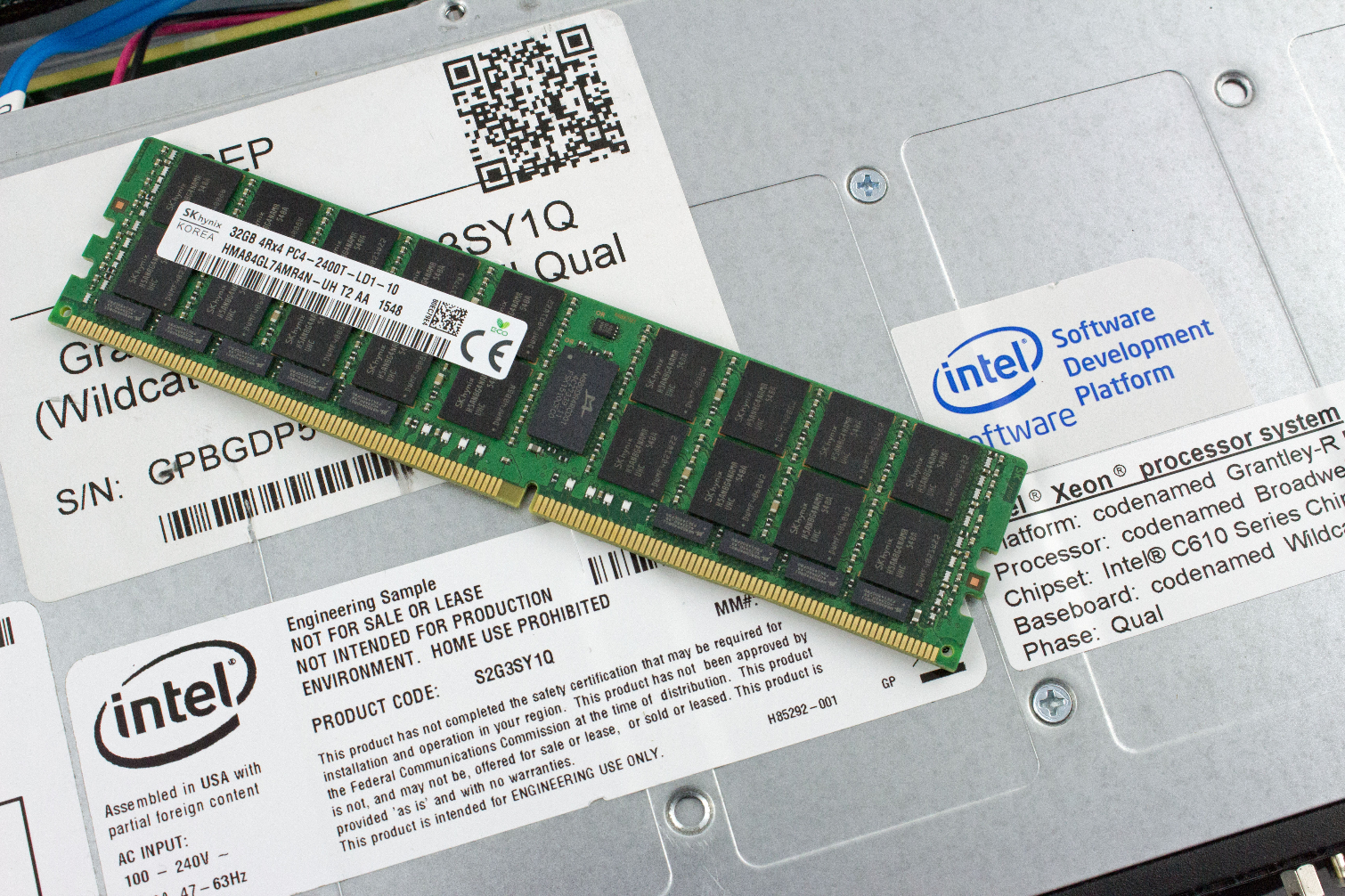
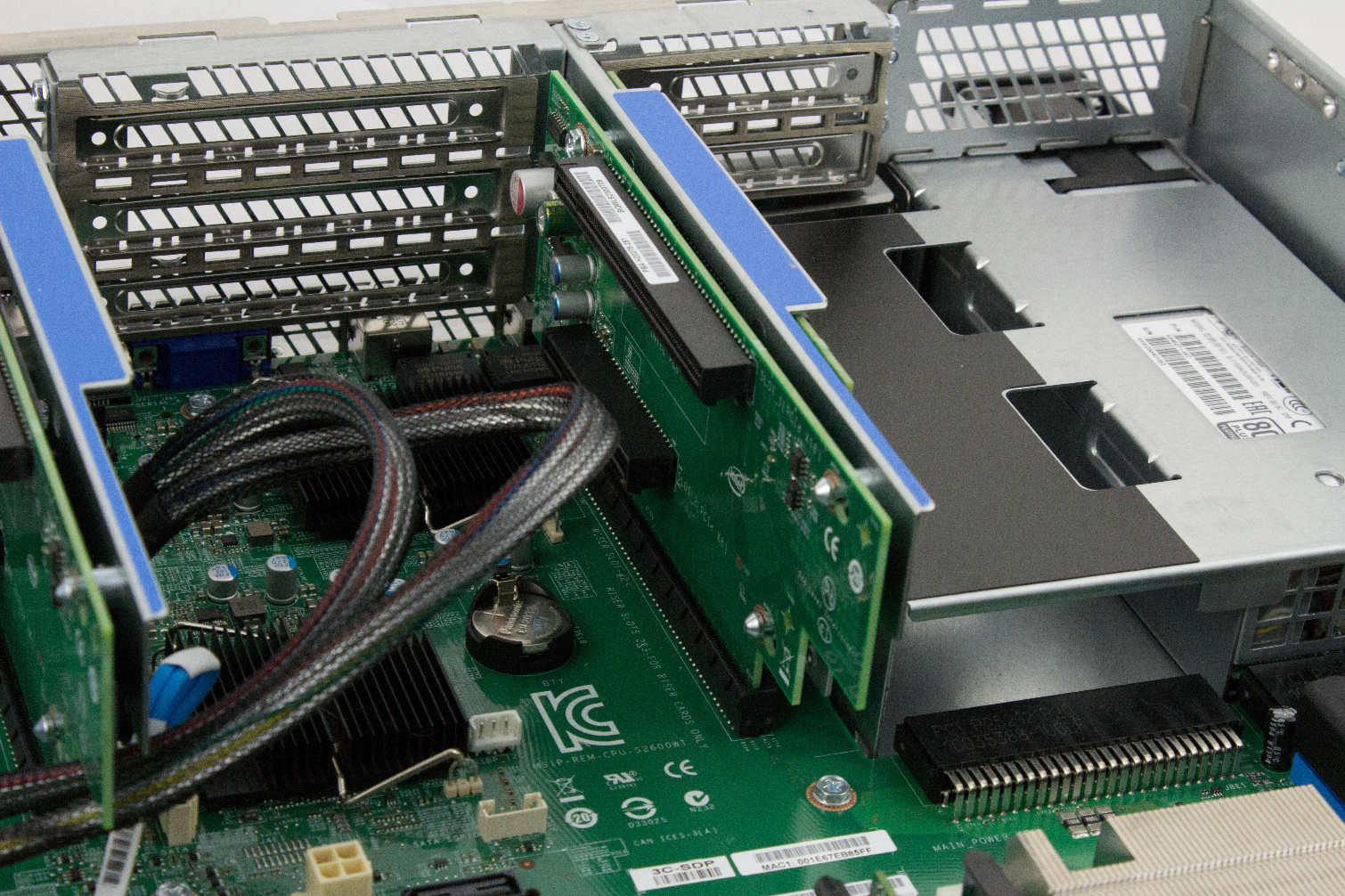
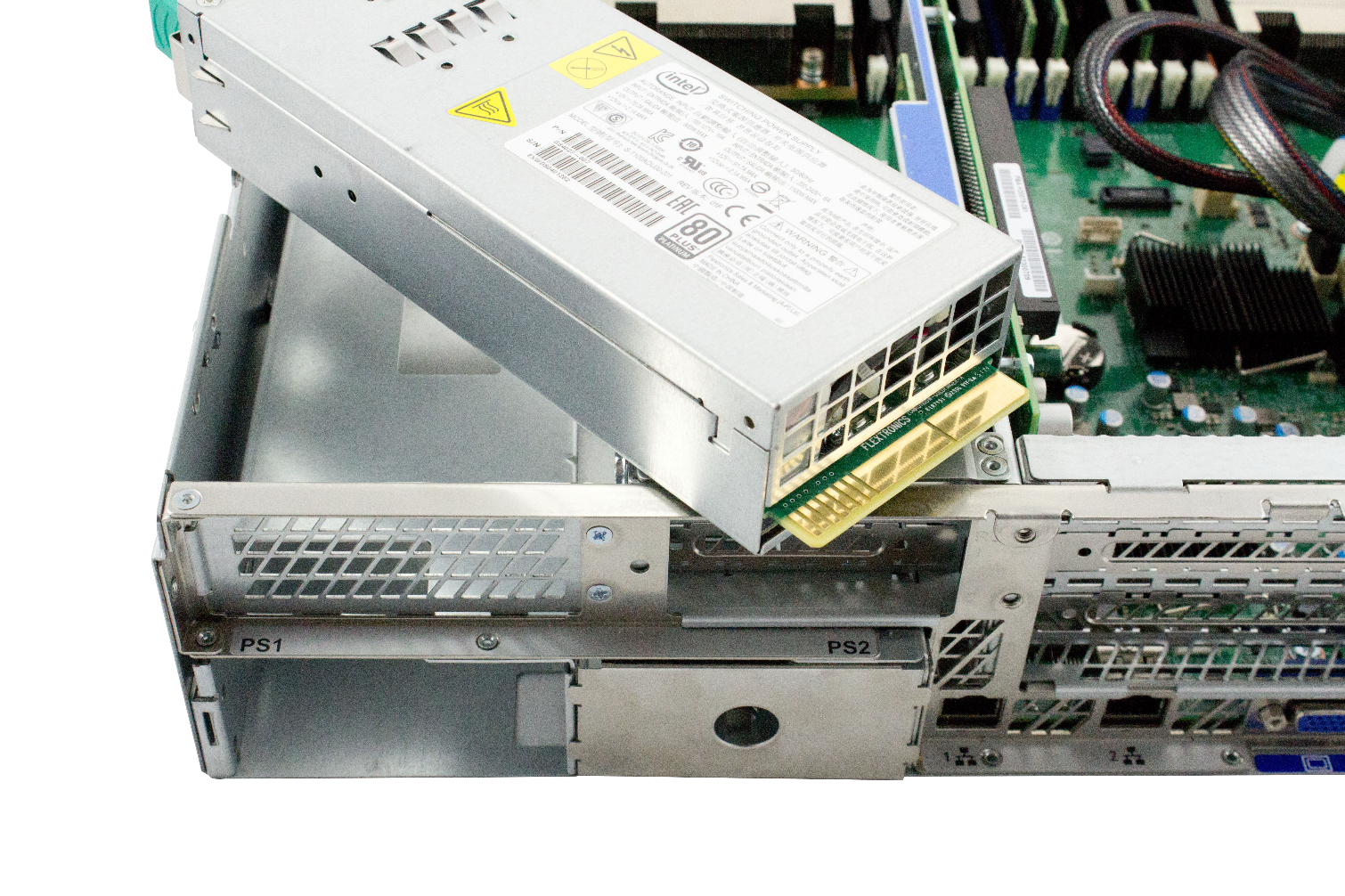
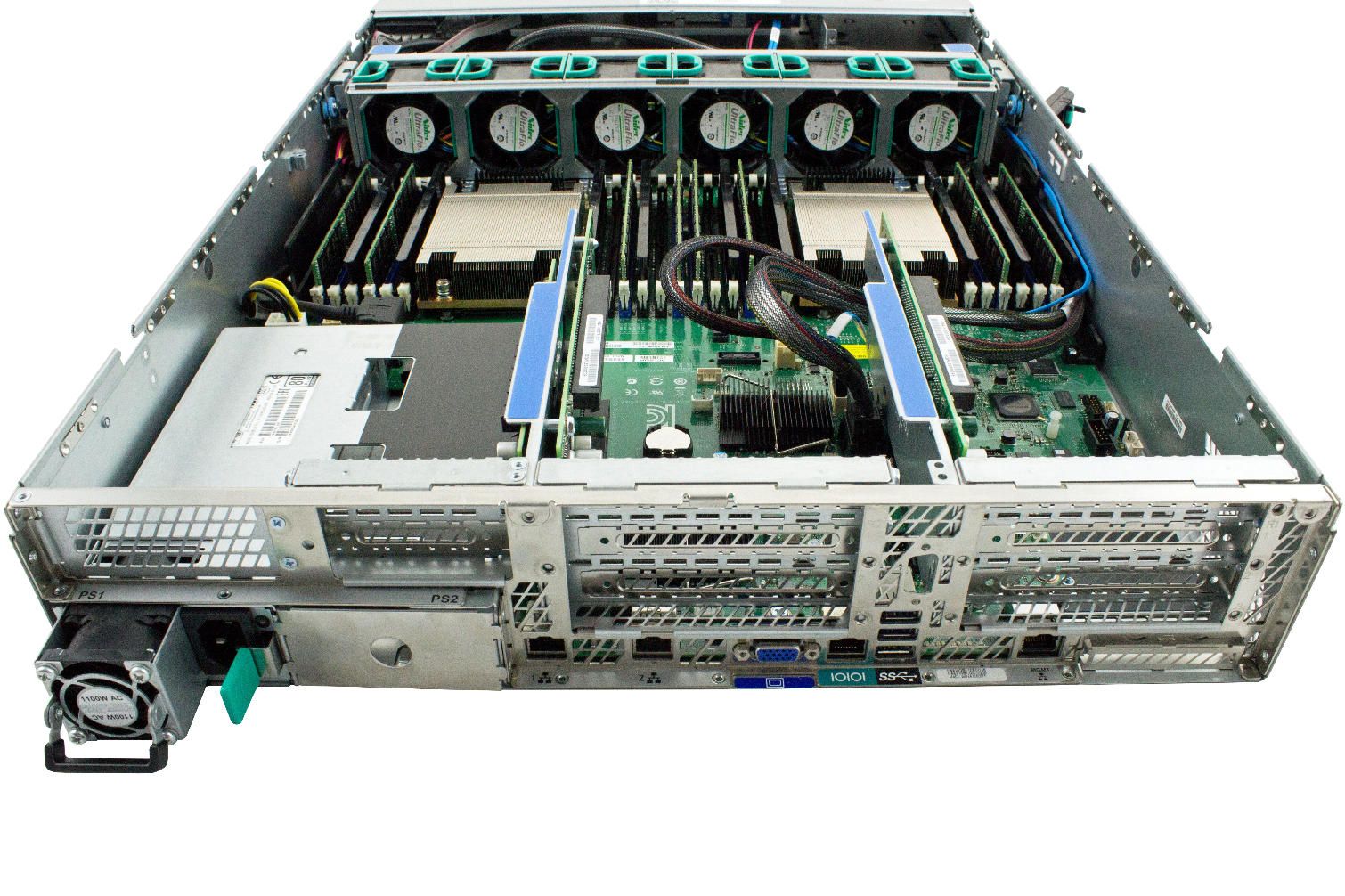
Intel sent us a pre-production Grantley-R EP S2G3SY1Q (Wildcat Pass) Broadwell Qualification system for our tests. The 2U test bed came with two Xeon E5-2697 v4 CPUs with 18 Hyper-Threaded cores and 45MB of shared cache apiece (that's 2.5MB of last-level cache per core). These beefy CPUs feature a non-AVX base clock of 2.3GHz and a maximum Turbo Boost frequency of 3.6GHz. The E5-2697 v4 offers a base clock of 2.0GHz and a Turbo Boost ceiling of 2.6GHz under AVX-optimized workloads.
The test platform features Intel's C610 chipset family and includes eight 32GB SK hynix DDR4-2400 DIMMs (HMA84GL7AMR4N-UH). Two riser cards enable PCIe connectivity, but weren't used in our testing.
Intel provides this server for use as a software development platform; it's not designed for use in a production environment. As such, it lacks some of the features that facilitate redundancy, such as dual PSUs. One of the PSU bays is covered, but the other houses a single 900W power supply.
Intel Server System R2208GZ4GC
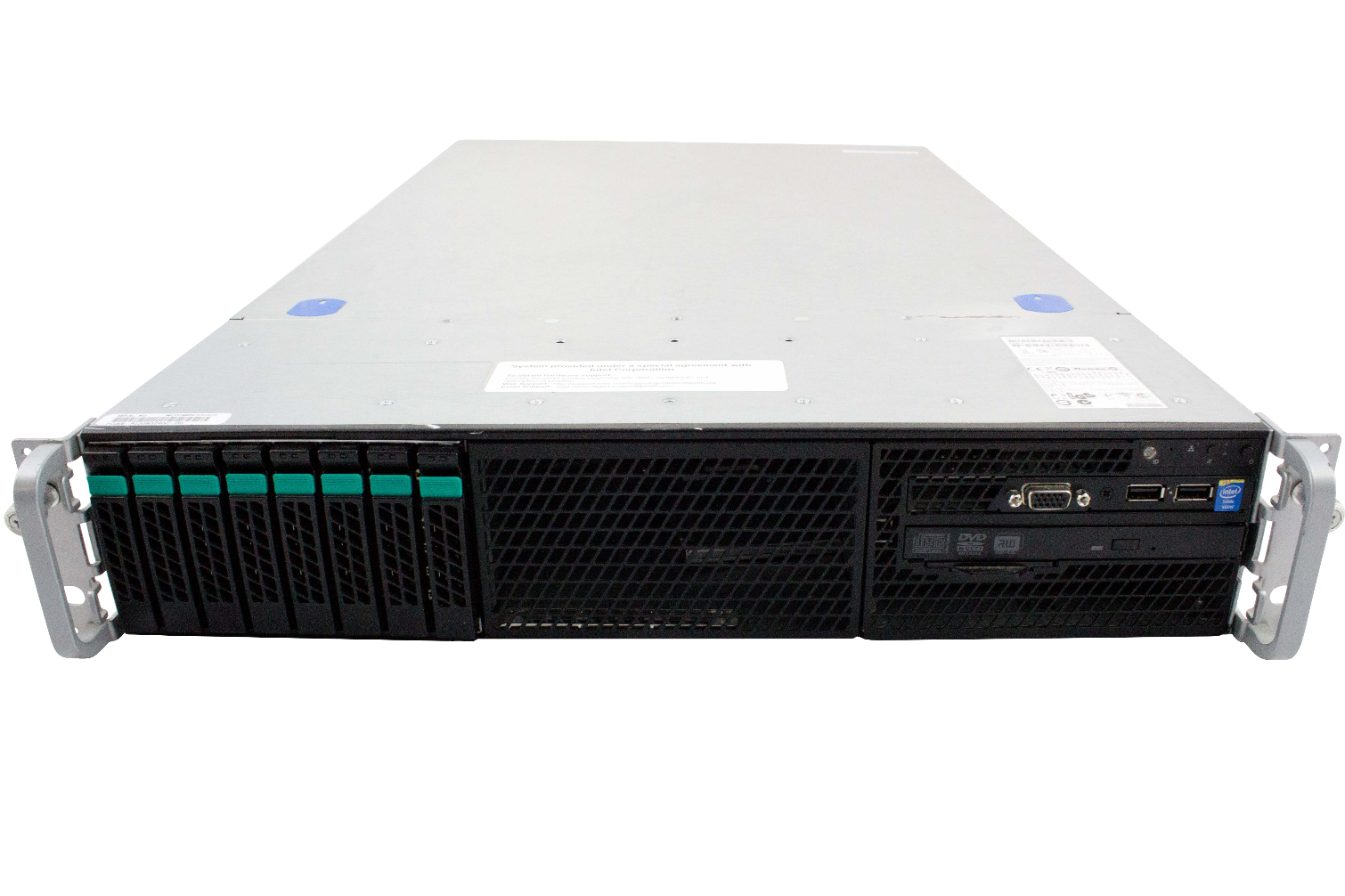
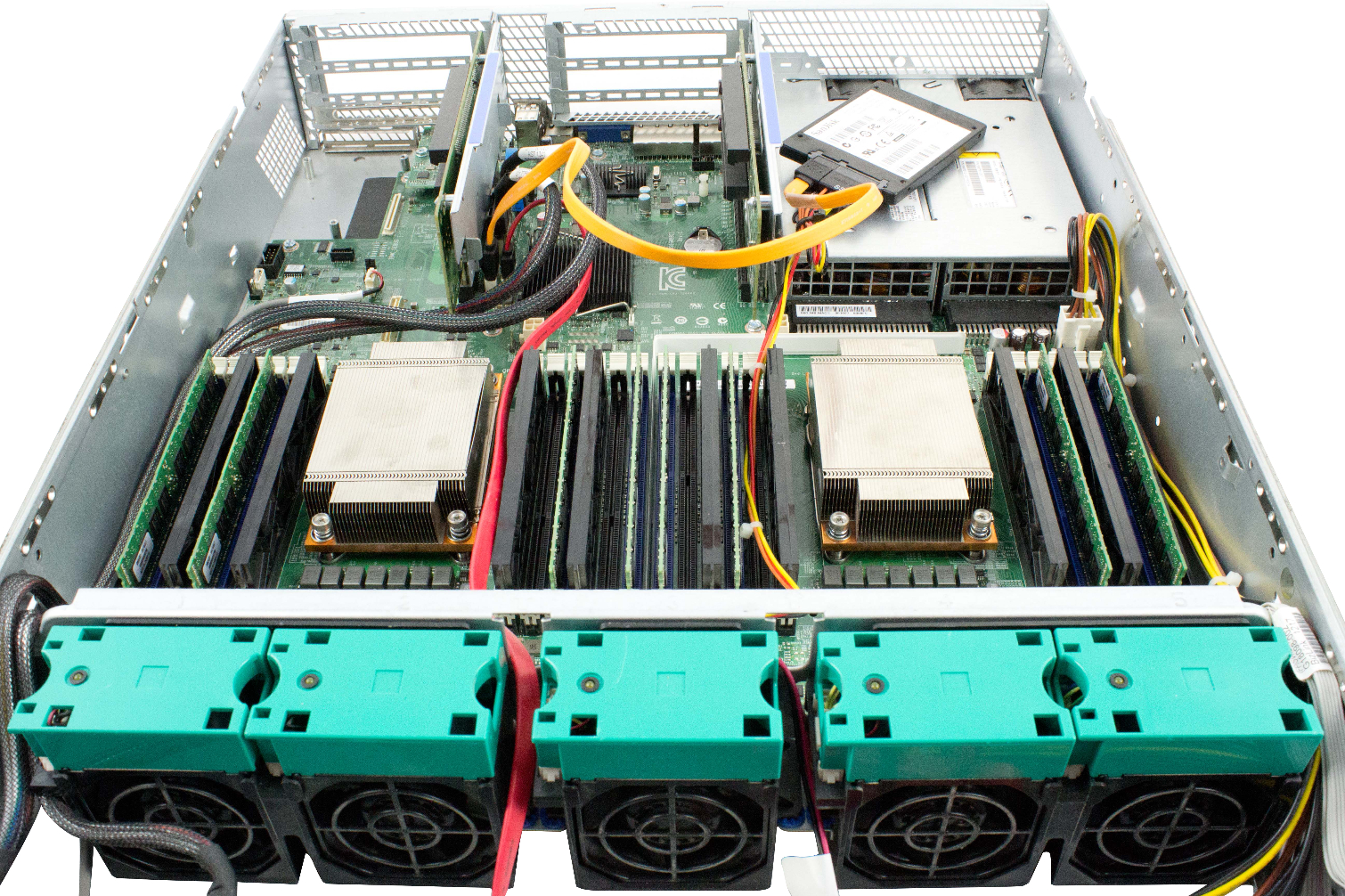
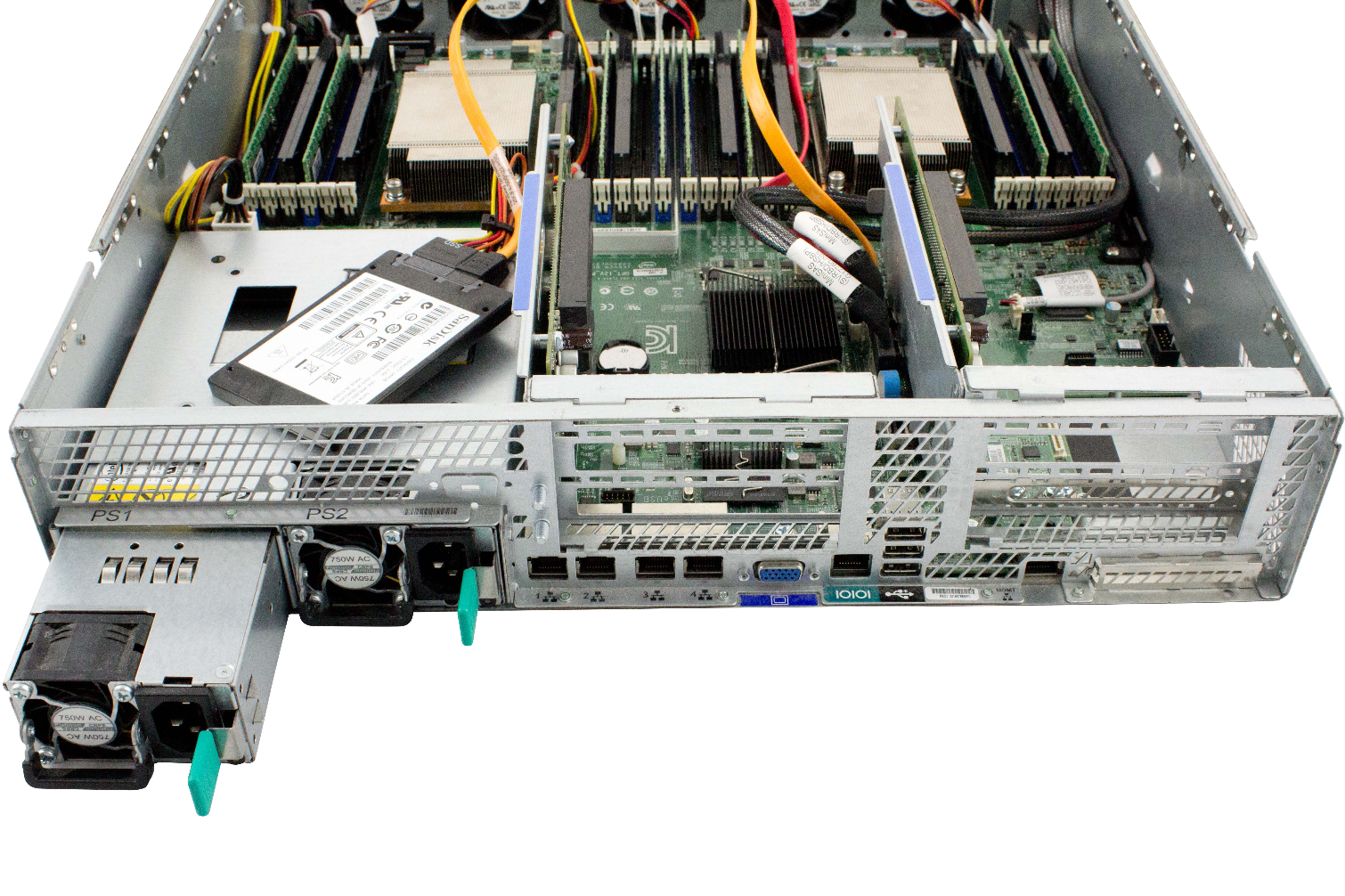
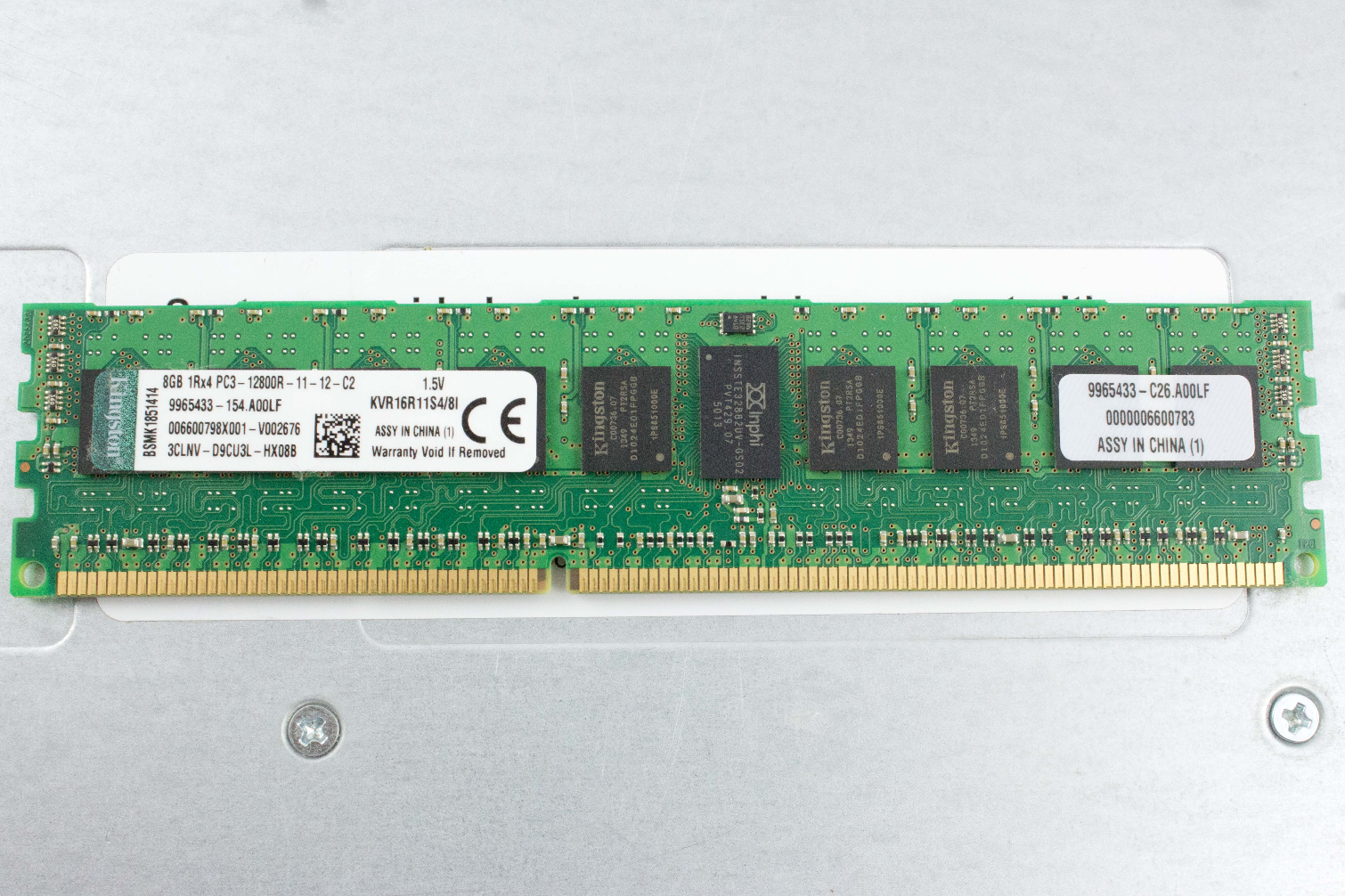
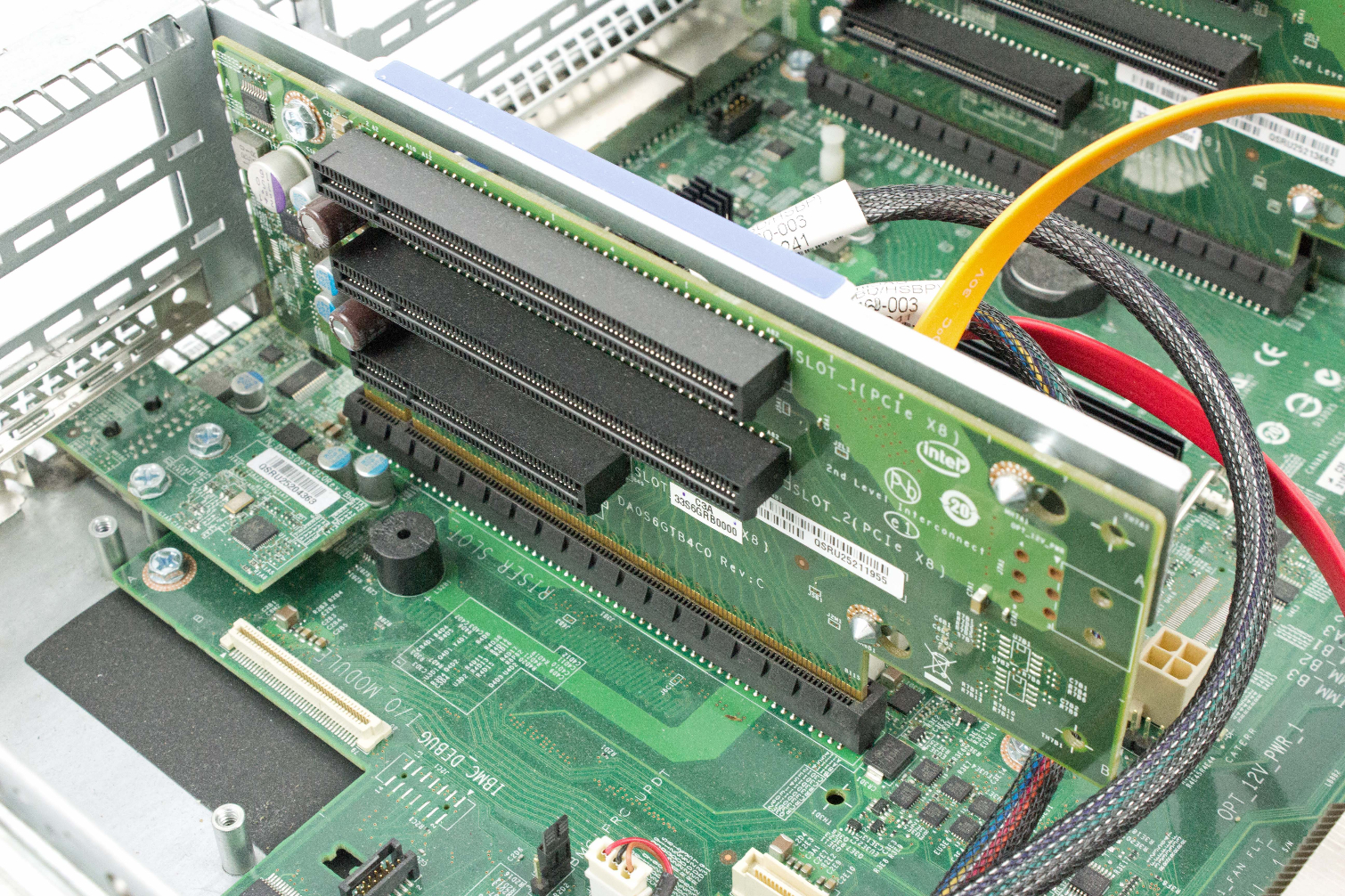
An Intel R2208GZ4GC functions as one of the workhorses in our enterprise storage lab, and it has the scratches, bumps and bruises to prove it. At its heart, the server features the S2600GZ motherboard (C602 chipset) housed in a production-class chassis with the requisite redundant and hot-swappable fans, along with dual hot-swappable 750W power supplies.
Two riser cards have seen more than their fair share of RAID controllers, HBAs and PCIe SSDs, but again, they weren't required for today's benchmarks. We installed 64GB of Kingston DDR3-1600 memory in 8GB modules. Other notable platform features include quad 1GbE connections and an RMM4 module for remote management.
Get Tom's Hardware's best news and in-depth reviews, straight to your inbox.
Current page: Intel Test Platforms And How We Test
Prev Page Broadwell-EP Architecture Next Page Supermicro And NVMe RAID Testing: 3 Million IOPS And 21 GB/s
Paul Alcorn is the Editor-in-Chief for Tom's Hardware US. He also writes news and reviews on CPUs, storage, and enterprise hardware.
-
utroz Hmm well we know that Broadwell-E chips must be coming very very soon if Intel let this info out.Reply -
bit_user Wasn't there supposed to be a 4-core 5.0 GHz SKU? Single-thread performance still matters, in many cases.Reply
-
turkey3_scratch Reply17746082 said:Wasn't there supposed to be a 4-core 5.0 GHz SKU? Single-thread performance still matters, in many cases.
In most server applications it doesn't matter as much as multithreaded performance. If you need single-core strength, getting a consumer chip is actually better, but you probably aren't running a server if single-threaded is your focus. -
PaulyAlcorn ReplyWasn't there supposed to be a 4-core 5.0 GHz SKU? Single-thread performance still matters, in many cases.
I read the rumors on that as well, but nothing official has surfaced as of yet to my knowledge. -
bit_user Reply
Try telling that to high-frequency traders. I'm sure they want the reliability features of Xeons (ECC, for example), but the highest clock speed available.17746141 said:17746082 said:Wasn't there supposed to be a 4-core 5.0 GHz SKU? Single-thread performance still matters, in many cases.
In most server applications it doesn't matter as much as multithreaded performance. If you need single-core strength, getting a consumer chip is actually better, but you probably aren't running a server if single-threaded is your focus.
And the fact that Intel even released low-core high-clock SKUs is an acknowledgement of this continuing need. Clock just not as high as I'd read. With the other specs basically matching the Haswell version, the only difference is ~5% IPC improvement. Seems pretty poor improvement, for a die-shrink.
-
firefoxx04 Would nice to have a quad core xeon that turbos at 4.4ghz just like the 4790k. I had to go with a 4690k when building an autocad system because it only uses one core and needs that core to be fast... this means i have to sacrifice ecc support.Reply -
bit_user Reply
On wccftech (not the most reliable source, I know), they claimed:17746160 said:Wasn't there supposed to be a 4-core 5.0 GHz SKU? Single-thread performance still matters, in many cases.
I read the rumors on that as well, but nothing official has surfaced as of yet to my knowledge.
Model: Intel Xeon E5-2602 V4
Cores/threads: 4/8
Base clock: 5.1 GHz
Turbo clock: TBD
L3 Cache: 5 MB
TDP: 165W
Given what we know about 2.5 MB/core of L3 Cache, the 5 MB figure sounds suspicious. It's conceivable they could disable some to hit the target TDP, I guess.
-
firefoxx04 We cant get skylake to consistently hit 5ghz... why would a xeon chip suddenly hit 5ghz?Reply -
JamesSneed Reply17746312 said:We cant get skylake to consistently hit 5ghz... why would a xeon chip suddenly hit 5ghz?
I'm not saying the 5Ghz rumor is true but Intel has always known which chips can hit higher clocks during certification if the chip is a top end or low end chip cores disabled etc. I'm sure they could cherry pick a few to sell for $$$ if they wanted. Now are they I have no real idea. -
bit_user Reply
Well, I was surprised, too.17746312 said:We cant get skylake to consistently hit 5ghz... why would a xeon chip suddenly hit 5ghz?
There are obviously things you can do in chip design that allow one to reach different timing targets. And I was hoping they might've refined their 14 nm process, since the time the first Broadwells launched. So, I thought, with more TDP headroom afforded by this socket (roughly double what Skylake has to work with), maybe they could do it.
I thought maybe Intel was addressing some pent-up demand for high clockspeed applications. That said, it seemed particularly odd in Broadwell, given that it generally seems oriented towards lower clockspeed / lower power applications.
But maybe it was a typo, or even a blatant lie, in order to track down leakers.